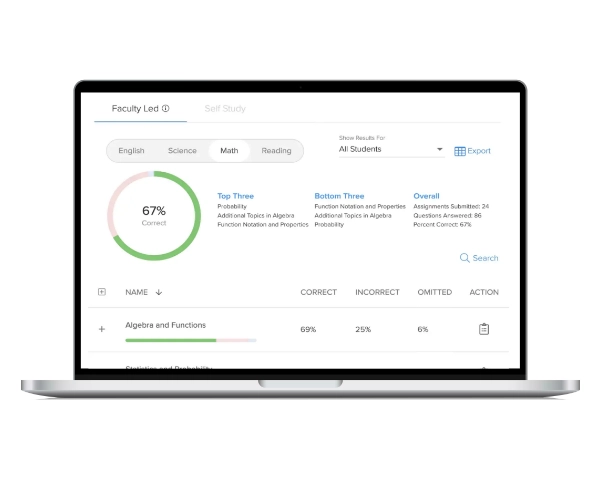One thing great teachers have in common is the desire to analyze what’s going well, what isn’t, and why. When it comes to teaching an AP® course, these analyses become even more crucial due to timing and the need for students to be adequately prepared to pass the annual exam.
But that timing – so much learning compressed into a short period – can also lead many AP teachers to fall back into “what we’ve always done.” And this repetitive behavior could be where the problem lies when students don’t fully grasp a topic.
It may just be that how the lesson was initially taught is not allowing the students to make sense of the information and retain it. According to Philip Bates, UWorld’s Director of College Readiness, some teachers tend to fall back into old habits instead of looking at data to see exactly where the problem lies, and then pivoting and implementing new methods of instruction.
“I’m a big believer in taking ownership when the students are not succeeding,” Bates said. “Maybe the kids didn’t get it because it wasn’t taught in a way that allowed them to understand.”
He added that it’s vital for teachers to do some self-reflection and implement new lesson planning. That is how great teachers adapt to help students learn, he noted.
“To honestly reflect and regroup, you need data to look deeply at your teaching,” said Bates.
His colleague, Suzanne Dilday, Curriculum Manager for UWorld’s College Readiness and a former AP educator, agrees.
“We all know learning often requires several attempts before mastery takes place, yet we sometimes teach as if ‘one and done’ is good pedagogy,” she said. “Neither students nor teachers have ‘failed’ if everyone doesn’t learn something the first time. That’s why it’s important to offer multiple opportunities to acquire a new skill.”
So what can AP teachers do when they come to the realization there is a problem as they face the last few weeks of classes? Bates recommends a deep look into what the bulk of students need and what tools will help get them up to speed.
“At this point, you can’t reteach six weeks’ worth of content, but you can focus on what’s needed most, and work more efficiently,” recommends Bates.
Using resources that include assessments at the end of each unit allows instructors to review the data, identify weaknesses, and then reintroduce or reteach that topic with a targeted activity, advises Dilday.
“If a concept was originally taught in a lecture, a group activity might be in order next time,” she suggests. “If a skill was first taught by observation, a hands-on approach might be the new way to go. The more approaches you use to teach your course, the more learners you pick up along the way.”
Teachers can devise an activity that requires two class periods to cover instead of weeks. If UWorld’s Learning Tools for AP Courses is in use, the included unit tests make it easy to go back to those students who need help and present a road map on what to do next. Teachers can then:
- Break down the subtopics where students struggled and focus on those
- Quickly see what is catching on and what’s not. Then focus on a different approach to teaching those tough topics.
Both Bates and Dilday concur that educators needn’t spend valuable time reteaching content and concepts in the same way they always have. They instead recommend using data to find out what this specific class of students struggles with and adapt accordingly. Use unit tests to get the right data as you go along, take time to reflect, and move ahead with a new approach.
Analyze, adapt and implement — three qualities that help make a great teacher.




